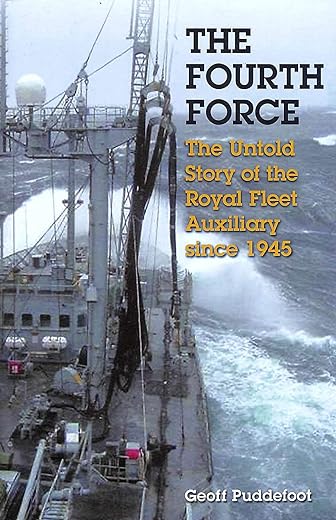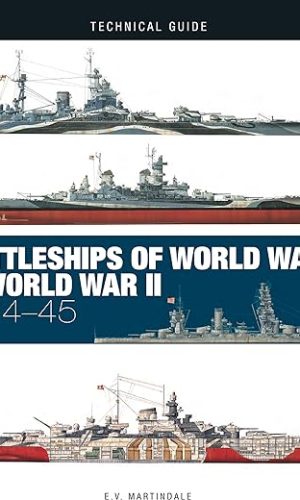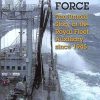The Fourth Force: The Untold Story of the Royal Fleet Auxiliary Since 1945
£28.30
Set up in August 1905, the Royal Fleet Auxiliary was originally a logistic support organization, part of the Navy proper but run on civilian lines, comprising a miscellaneous and very unglamorous collection of colliers, store ships and harbour craft. Just over a century later it has evolved beyond recognition: its ships compare in size, cost and sophistication with all but the largest warships, and the RFA itself has developed into an essential arm of all three Services. It is truly the Fourth Force as it is known to its own personnel and without it, the current worldwide deployment of British service men and women would be simply impossible. This book charts the veritable revolution that has overtaken the RFA since the end of the Second World War. New technology and techniques reflect the rapid growth in the importance of logistics in modern warfare, while the broadening role of the RFA is to be seen in the history of its operations, many of them little known to the public. Woven together from a combination of technical ship data, official correspondence and personal recollections, it is predominantly about the men and women of the RFA and their stories an insight into the underreported history of a service whose initials unofficially translate as Ready For Anything.
Read more
Additional information
| Publisher | First Edition (30 Oct. 2009), Seaforth Publishing |
|---|---|
| Language | English |
| Hardcover | 256 pages |
| ISBN-10 | 1848320469 |
| ISBN-13 | 978-1848320468 |
| Dimensions | 16.51 x 3.18 x 23.5 cm |










by mr michael hall
good
by Frederick Stephenson
A must for ex RFA men and merchant service.Will certainly look at other books by this author.Already other members of MNA interested.
by Clairac
`THE FOURTH FORCE’
(also `READY FOR ANYTHING, the RFA 1905 to 1950′)
These two detailed books provide a comprehensive history of the Royal Fleet Auxiliary (RFA), from its establishment in 1905 to the present day, when its role in support of the Royal Navy remains just as important to the success of this country’s defence policy and naval strategy. Together they make a fitting tribute to the RFA, aptly called “The Fourth Force”. The RFA is of much interest to us locally having operated out of Portsmouth for over a hundred years.
The first book `Ready for Anything’ covers those early years as the RFA grew and then its important role throughout the two world wars, though mainly World War II. It describes the formation with the Admiralty Blue Ensign being approved in 1908 and the term RFA appearing in the Navy List in 1913, at least the RFA was up and running before the outbreak of World War I. The book only devotes thirteen pages to World War I, but sixty-two pages to World War II, demonstrating the much greater part played by the RFA in the second war. In fact the RFA was crucial to success and was involved in most of the major sea battles after 1939. The text is backed up by many informative data boxes, such as RFAs used as Q ships (in both wars) and Dummy battleships and battle cruisers that later became RFA ships. The book has five good, detailed, Appendix including a most useful twelve-page chronology of RFA involvement in world events. It also has thirty-seven pages of very detailed ship data tables, in contrast to the brief and rather skimpy index.
The second book, `The Fourth Force’ sub titled “The Untold Story of the Royal Fleet Auxiliary since 1945”, covers an important gap in the record of British Naval History since the end of World War II. In fact the book really starts in 1950 and so follows on naturally from the earlier period, covered above. It provides a detailed and fascinating account of the Royal Fleet Auxiliary (RFA) over that period, including the Korean War and the Falklands, though rather surprisingly devotes only six lines to Operation Musketeer and the Suez Crisis. It does, however, show just how crucial the RFA has been to the logistic support of most operations and deployments by the Royal Navy worldwide, particularly with increasing dependence on specialist spares for modern technology and highly complex, intricate weapon systems. Many people may not be aware just how closely the RFA accompanied the combat ships of the Royal Navy in operations and deployments in the world’s trouble spots and the two chapters (thirty-eight pages) on Operation Corporate and the Falkland’s conflict provides the clearest proof of that involvement. The book even provides a detailed two-page chronology of nuclear weapons transfers during the conflict, which must have been highly classified information at the time. The subsequent chapter, entitled `Force Multipliers, Modern Sea War and the New RFA’ provides some good lessons for future warfare and defence strategy. It is a pity that current defence planners do not appear to be aware of such important lessons. Again the text is fully supported with most useful data boxes throughout, good appendix and twenty-nine pages of ship data tables. Though again the index could benefit from a more comprehensive coverage.
It is an important story clearly demonstrating how dependence on `afloat support’ steadily increased as Britain withdrew from its Empire and lost the facilities of its many overseas bases. Authenticity is added by the great many quotations, reports and first hand accounts, some very lengthy, by those who were there at the time or most directly involved. Though Geoff Puddefoot never served in the RFA he has many close contacts and has managed to do justice to the service. Though written before `Ready for Anything’, his account of the earlier period it, is his second book on the subject and clearly he has a profound understanding of the RFA. Both books, completed with their excellent data boxes, appendix, good chronologies and detailed ship data tables, are strongly recommended.
by George Wilton
I was not expecting this to be a great book after seeing the Amazon reviews of the author’s other work on the RFA. Having been in the RFA I have a personal rather than scholarly interest in this less than well documented part of the post war defence picture.
The book is often anecdotal in style and in my view sometimes judgemental without giving the basis. It fails to make the “great book” status of the more serious writers of military history and yet it is not rubbish either. i found it to be an enjoyable and relatively easy read and for me it provided a balanced picture of the RFA pre and post my time in it. I am pleased to say I did not find myself considering this book as ready for donation to the next charity sale so it will have space on my shelves of keepers and I will dip into it again.
Recommended if you have an interest in the post war RFA or RN but there are many better things to spend cash on in the military history genre.
by Jan
A very interesting history of the Royal Fleet Auxiliary, though I did find the print rather small and a few more photographs would have been helpful.
by Mr. D. G.
Very good all round.
by John
got me right up yo date
by Dennis Gilmore
Brilliant read glad I bought it